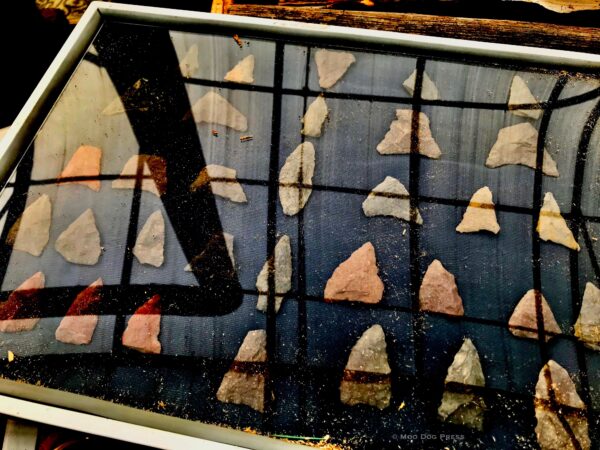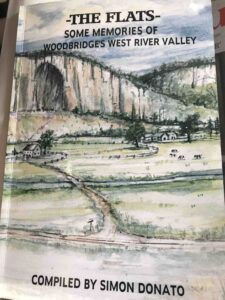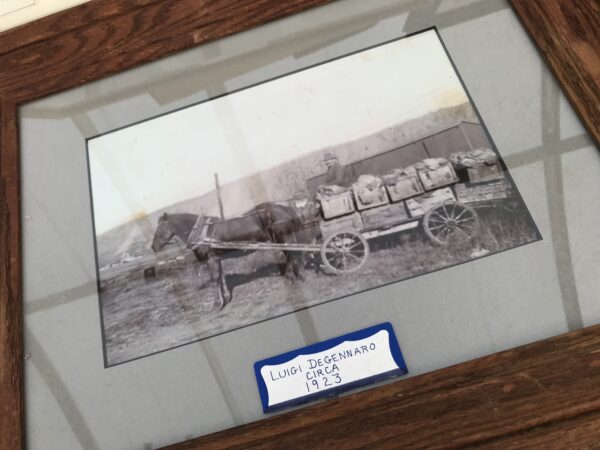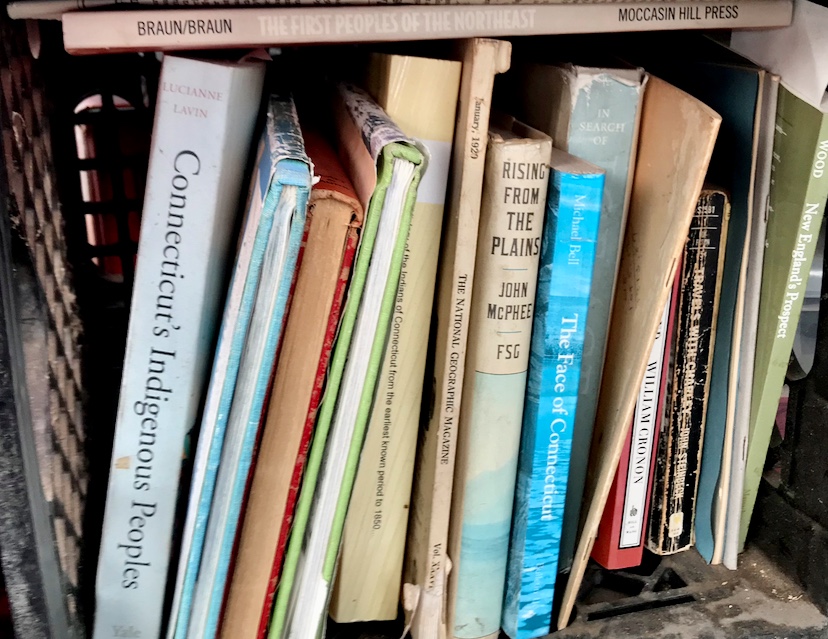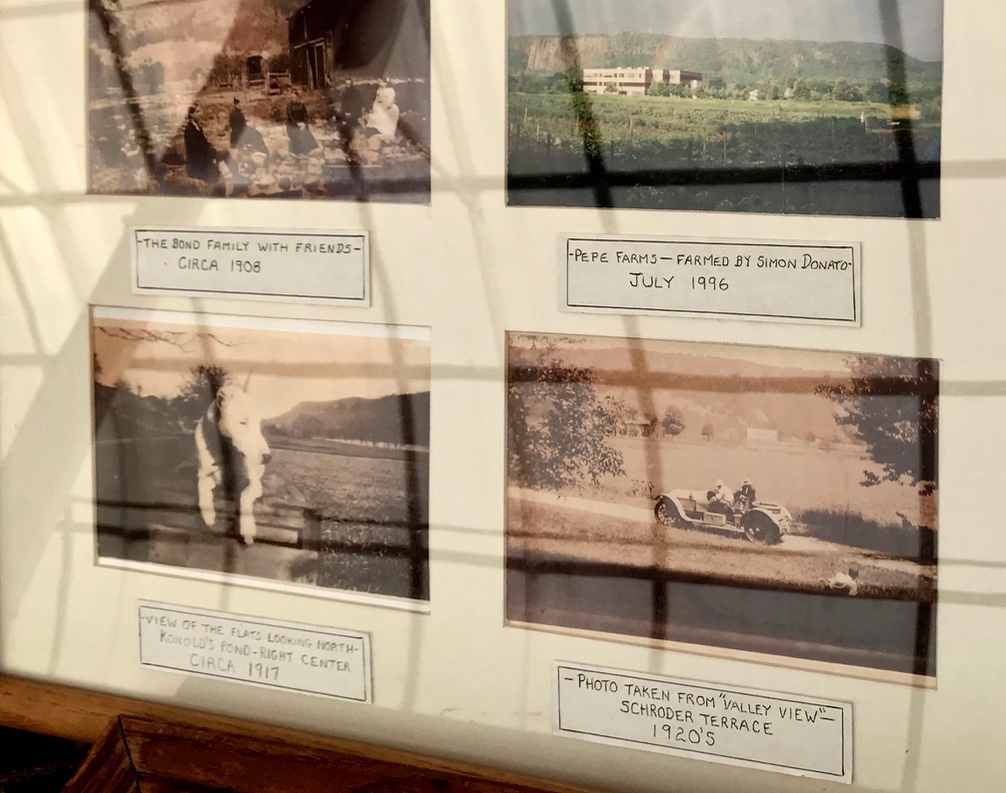Of Bethany, Woodbridge, Quinnipiac History In Time: Keeper of the Stories
Layers of time, human history, landscape and artifacts.

Jim Powers of Guilford, presentation about his new book, Shadows Over Dawnland, historical fiction about the coming of Europeans to New Haven and their effect on the Quinnipiac; hosted by Bethany Historical Society, CT. Powers is curator of the Dawnland Quinnipiac Museum, located on the grounds of the Dudley Farm Museum in Guilford.
The Bethany Historical Society hosted a presentation by Jim Powers of Guilford, about his new book, Shadows Over Dawnland, historical fiction about the coming of Europeans to New Haven and their effect on the Quinnipiac; Friday, March 11, Lakeview Lodge, 265 Beacon Rd. (Route 42), Bethany, CT.
Editor's note: This story has been updated 3/11/2022.Also present, Simon Donato of Woodbridge, a retired farmer and author of The Flats, with part of his collection of Quinnipiac stone artifacts, collected over his lifetime in the Woodbridge flats, which was an active Quinnipiac settlement site in the 17th century. Donato, an avid reader and researcher is a fount of knowledge about the Quinnipiac and the area. He plans to build a replica roundhouse in Woodbridge this year. Link to a story about Donato from an interview earlier 2022.
Here is a synopsis of Powers' book Shadows Over Dawnland:
“Having lost both his parents and sister to smallpox during the first year of its arrival in his homeland, Ponaim as a 12-year-old orphan was taken in by the shaman of the Quinnipiac. So begins the story of how Ponaim would follow in the footsteps of the great Commossuck as they both struggle to restore the spiritual and physical balance to their world brought by the arrival of English colonists to the shores of Southern New England. Over the next fifty years, as his people face the overwhelming changes brought by the English, Ponaim would never lose hope that somehow with the aid of the spirit world, he might find a way for the Quinnipiac to survive. The result is a window opened to witness the cultural and spiritual calamity that destroyed a way of life that had existed for thousands of years. Would Ponaim in the end be successful?”
From the author's bio via Amazon: “James T. Powers first developed a life-long love of history while growing up in the old industrial town of Wallingford, Conn., where he came to realize that the past was all around us and that by connecting to it we could come to better understand who we are. Following graduation from Wesleyan University in Middletown, Conn., James committed himself to a career of sharing that love through the teaching of history.
“As an historian, archaeologist, lecturer, and educator for 40 years, throughout his career James has studied and taught about Early American history and Native American life and culture. His interest in the Quinnipiac and his desire to share the story of the Quinnipiac experience has been furthered through his research while involved in the establishment of the Quinnipiac Dawnland Museum at the Dudley Farm Museum in Guilford, Conn., where he currently serves on the board of directors and is a founding member. James is also a student of Celtic and Native American Shamanism which has given him insights into how that belief system shapes the world view of the cultures where shamanism is practiced. Besides a BA, James also received two Master's degrees from Wesleyan University in Middletown, Conn.
“Shadows Over Dawnland has recently been released by The Beacon Publishing Group (www.beaconpublishinggroup.com).”
Really enjoyed listening to Donato and how he first became interested in artifacts and how the landscape shaped his life. (Thank you Simon.)
Simon Donato, video above is a snippet from recent interview.
An excerpt from Donato's writings about The Flats:
“Today, we can still see evidence of the glaciers passing. Tumbled blocks of basalt along the seven mile base of West Rock were mostly caused by ice advancement. Atop West Rock and Longhill (behind the present day Amity Shopping Center), there are three boulders of granite larger than a dump truck. These boulders, called glacial erratics, were deposited where they stand today as the ice sheet melted, ending their ride from the north where they were picked up by the ice flow somewhere between Mt. Tom, Massachusetts, and Meriden.
“Judges Cave is a prime example of a glacial erratic, and another weighing twelve hundred tons lies directly west, atop Long Hill behind the Amity Shopping Center. A collection of three large erratics lie 150 feet off the east side of Amity Road by the intersection of Route 67 (Seymour Road).
“A recent archaeological excavation (2011) at the base of one of these three erratics yielded a radiocarbon date of 750 years. Future excavations are planned and should yield earlier dates as the site will be examined to a deeper depth.
“If someone were to dig a trench eight feet deep almost anywhere in The Flats, the stratum of glacial deposit would be obvious…sort of like a slice of lasagna. At the lowest level would be a jumble of rocks with sizes ranging from softball to basketball size. These rocks are held fast in their resting place by a mixture of sand, silt and clay, which was deposited by glacial outwash. This action occurred as the glacier started its retreat, and the ice melt caused rushing water to deposit its accumulated rock debris in the West River Valley.”
Now, for more about the Dudley Farm Museum, North Guilford, CT, a video tour overview.
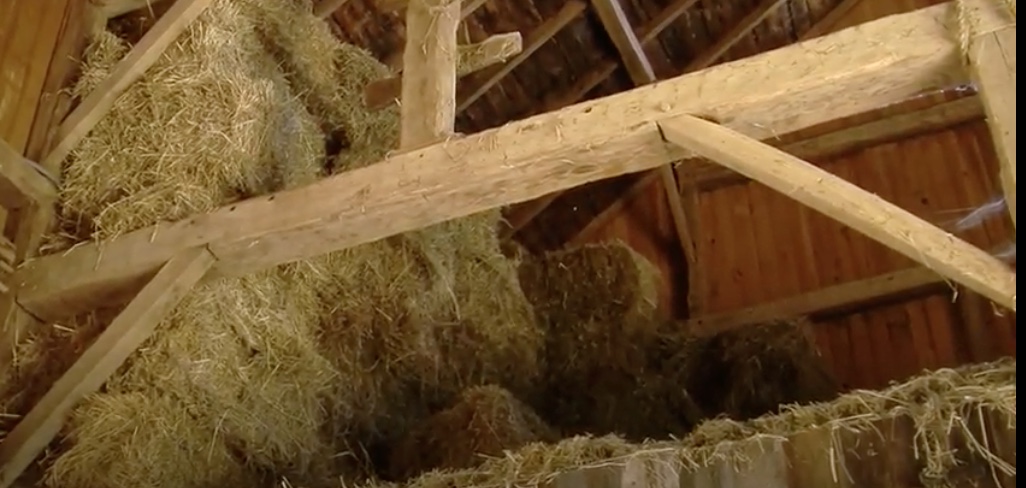
“Made from chestnut…” at 9:30 video tour of the Dudley Farm Museum, still image is connected to full video via YouTube.
From a recent press release:
The Dudley Foundation (DF) is pleased to announce that Connecticut Humanities, the statewide, nonprofit affiliate of the National Endowment for the Humanities (NEH), has awarded The Dudley Foundation a $10,000 CTH SHARP Capacity Grant to support exhibit planning for the Quinnipiac Dawnland Collection at The Dudley Farm. The DF has an excellent collection of artifacts representing the area’s indigenous people. The Quinnipiacs first populated this area approximately 10,000 years ago and were estimated to number between 250 and 460 individuals at the time of contact with Europeans 400 years ago. Gordon “Fox-Running” Brainerd donated his extensive collection of Quinnipiac items to the DF. An accomplished public historian, speaker and Quinnipiac cultural consultant, Fox-Running provided decades of service to many educational institutions before his death in 2021. As a tribute to Gordon, the DF Board of Directors plans to construct a building to house and properly display all those artifacts and materials donated by Gordon. This grant will help assure that the display design will sensitively and accurately tell the story of the Quinnipiac people, their history and culture.
“I am very pleased that we will now be able to provide the appropriate care and display of this collection, which was Gordon’s life-long endeavor,” stated Beth Payne, Museum Director. “And we are fortunate to have James Powers, a local expert on the Quinnipiacs, on our Board to guide this project.”
The Dudley Farm Museum/Dudley Foundation was one of 69 organizations in Connecticut that was awarded American Rescue Plan funding from CT Humanities. CTH SHARP Capacity Grants provide organizations funding for projects including building their information technology infrastructure, making their collections more accessible, conducting strategic planning, and undertaking inclusivity, diversity, equity, and access work.
The DF also received a $9,300 CT Cultural Fund Operating Support Grant from CTH, with funding provided by the Connecticut State Department of Economic and Community Development/Connecticut Office of the Arts (COA) from the Connecticut State Legislature. This funding is meant to address the needs of museums as they recover from the impact of COVID-19.
Resources: Dudley Farm events linked here; self-guided walking tour (PDF), here. More about Donato's book and writings, history, linked here; copies are available from the author and at Whitlock's Farm Booksellers in Bethany. (For his recommendations about the best books and resources, simply ask him.) Jim Powers book is available via Amazon. P.S. Hoping to get Donato's books listed on Amazon soon with a thumbnail sketch about his work and interests.

